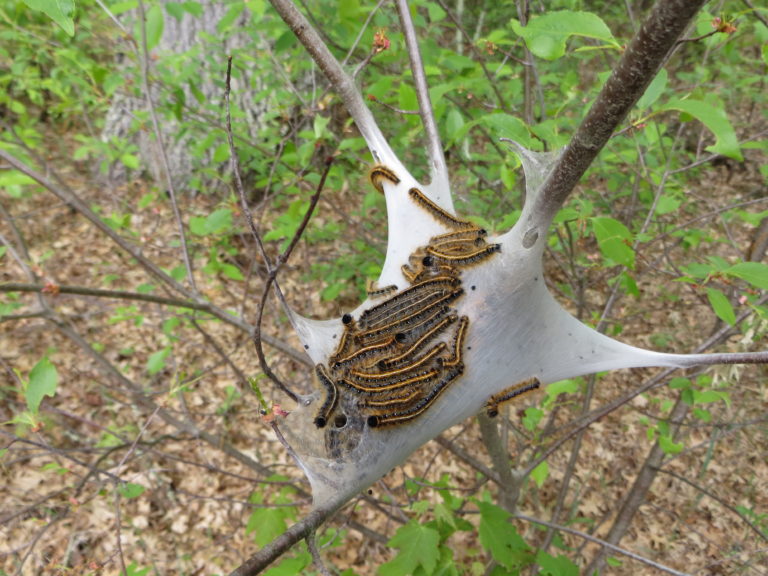If you have spent any amount of time in the woods, you have undoubtedly noticed damage to trees caused by insects. The damage could be in the leaves or the stem, under the bark or in the roots. It may seem alarming to you, but, to a tree, this is an everyday occurrence during the growing season.
My colleagues and I spend a lot of time talking to woodland owners like yourself about the worst insects attacking our trees, and most of the time those are non-native insects. That is because our trees can’t fend them off very well, even when they are healthy and vigorously growing. Getting less attention are the native insects that our trees deal with on a regular basis. It is good to have a bit of knowledge about these native insects so that you can distinguish them from the worst and be able to treat them appropriately.
Let’s first talk about those insects that feed on leaves and needles. The ones that usually get the most attention are the eastern tent caterpillars and forest tent caterpillars. They are always around, but usually their populations are low enough that the little bit of leaf eating they do isn’t a problem. Their populations get very high about once every 6-10 years, and that is when folks get excited about them. However, most broadleaf trees (like oak, maple and aspen) can handle having all their leaves eaten, and will produce another set of leaves that same year. So, unless the trees being fed upon are of high sentimental or financial value, you really don’t need to do anything.
Our conifers are affected by a couple of needle-eating insects that can become a problem when their populations get high. The eastern spruce budworm feeds on spruce and balsam fir trees. And if you have jack pine trees on your property, you need to keep an eye out for the jack pine budworm. If you spot either of these budworms on your conifers, it is a good idea to give your local DNR forester a call to let them know about it.
There are a number of other, lesser known insects that you may encounter feeding on your leaves and needles. Larch caseberers feed on the new needles of larch trees. Cherry scallop shell moth larvae feed on the leaves of cherry trees. You may see some discoloration of your leaves due to even smaller insects feeding on them like the aspen blotch miner, spider mites and wasps. These last three rarely are a big problem and mostly make the leaves look ugly.
Bark beetles are another group of insects that get our attention when their numbers get very high. They tend to feed under the bark of trees and can kill the trees if there are enough of them. There are several that affect our conifers, and they mostly attack trees that are under some kind of stress like overcrowding, drought, wounds, etc. You can read all about them in this publication. If you find these beetles in your trees, give your local DNR forester a call and they will help you determine the best actions to take.
Let’s move on to those insects damaging the branches of our trees. The worst of these is the white pine weevil which attack the top branches of white pine, jack pine and spruce trees. Less common and less damaging are the jack pine tip beetle, gall wasps, and aphids working with ants.
Insects are also attacking the roots of trees, like the pine root collar weevil, and even the fruit, like acorn weevils.
So, take some time to get to know these insects and keep an eye out for them when you are in your woods. If you see them in great numbers or it looks like your tree is failing, then give your local DNR Forester a call and let them know what is going on.
